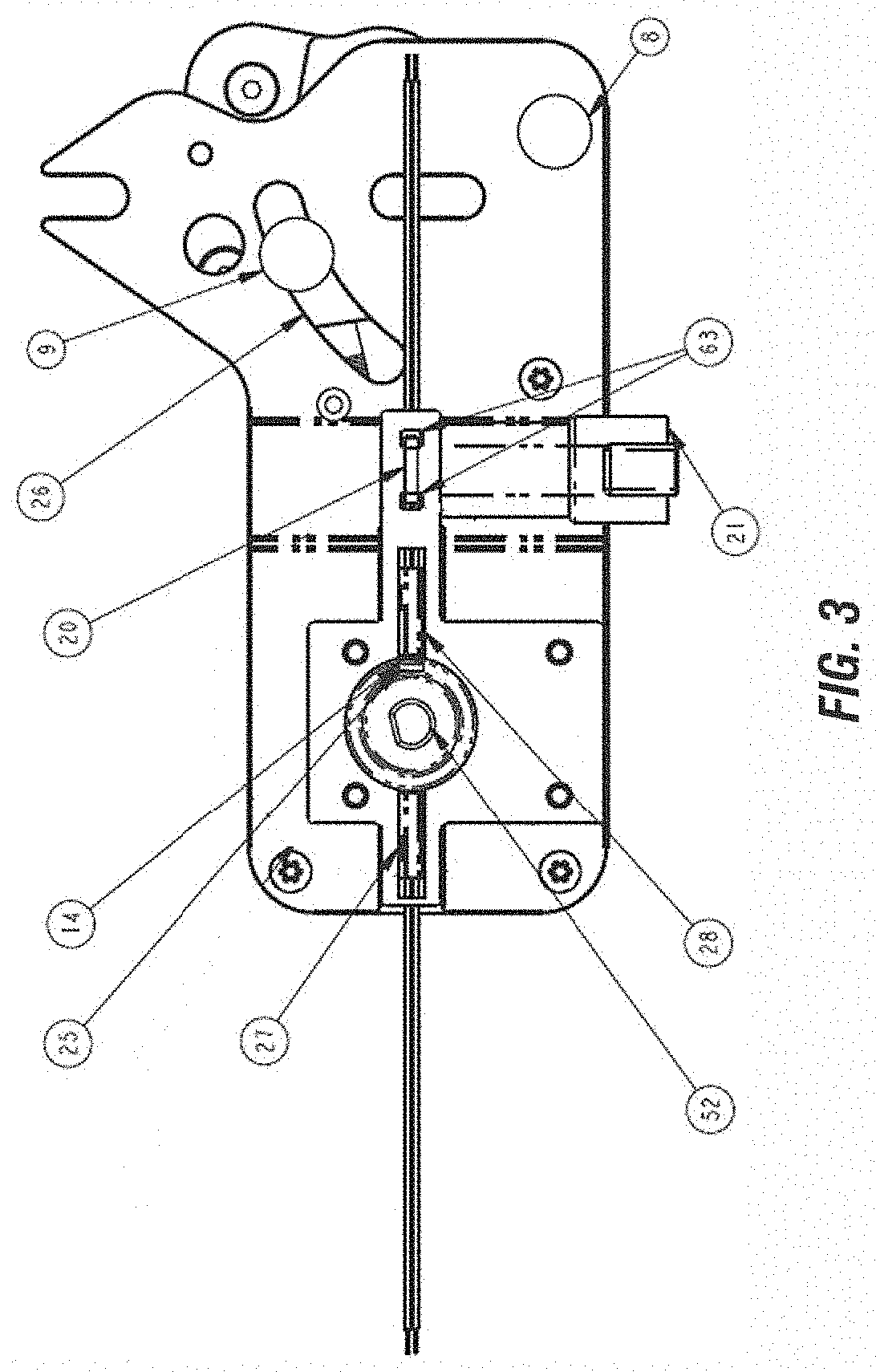Motor control for powered closure with Anti-pinch
a technology of motor control and power striker, which is applied in the direction of wing accessories, electrical locking circuits, lock applications, etc., can solve the problems of lack of an override system lack of any adjustment of the striker, and inability to open the door, etc., and achieve the effect of convenient shutting
- Summary
- Abstract
- Description
- Claims
- Application Information
AI Technical Summary
Benefits of technology
Problems solved by technology
Method used
Image
Examples
Embodiment Construction
[0056]The following part list describes the components and their functions, using reference numerals corresponding to the drawings.
1. Mount plate—provides mounting surfaces for all cinching mechanism parts and provides mounting and mounting adjustment details for mounting to the vehicle.
2. Glide—isolates the moveable pivot plate 3 from the mounting plate 1 to reduce friction and wear.
3. Pivot Plate—provides a base with a mounting surface for moveable apparatus, also has a pivot rivet mounting hole 67, and a pivot plate drive hole 58.
4. Torque Wheel—houses a magnet 14 for positional sensing, provides a drive feature for the motor interface, and a drive feature for a link that connects the torque wheel to the pivot plate 3.
5. Link Adjustment Screw—provides positive retention between the adjustable link components.
6. Driven Link—attaches to the pivot plate 3 via the drive rivet 9 and interfaces with the drive link 7 through the link adjustment screw 5.
7. Drive Link—attaches to the torq...
PUM
 Login to View More
Login to View More Abstract
Description
Claims
Application Information
 Login to View More
Login to View More - R&D
- Intellectual Property
- Life Sciences
- Materials
- Tech Scout
- Unparalleled Data Quality
- Higher Quality Content
- 60% Fewer Hallucinations
Browse by: Latest US Patents, China's latest patents, Technical Efficacy Thesaurus, Application Domain, Technology Topic, Popular Technical Reports.
© 2025 PatSnap. All rights reserved.Legal|Privacy policy|Modern Slavery Act Transparency Statement|Sitemap|About US| Contact US: help@patsnap.com



